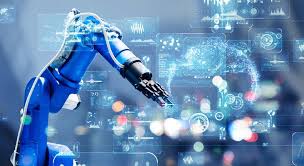Source: analyticsinsight.net
Most of the manufacturers said COVID-19 will affect their operations, as per an ongoing study by PwC. Over 40% were worried about the consequences for their workforce and a reduction in efficiency. Many are currently looking to robotics technology to augment locked down employees, bolster health and security measures, and, now and again, tap new opportunities or rescue their operations.
Significant manufacturers, for example, GE, Honda, Ford and General Motors, have incidentally shut their plants to help secure workers. Smithfield Foods shut three of its plants after more than 500 workers tested positive for the coronavirus. While many accept the pandemic is transitory, producers are investigating automation to maintain operations
As the supply chain and manufacturing wade through the COVID-19 emergency, organizations have reestablished their embrace of robotics, if with circumspection. Even with COVID-19 and its related budget constraints in numerous sectors, the business keeps on reviewing robotics as a key long-term investment. As per an IDC 2020 supply chain survey, 73% of respondents state that robotics will be significant or imperative to their company in the following three years.
Today, robots in the workforce are capable of explicit, repeatable tasks for which they are decisively programmed. Along these lines, a warehouse-trained robot may carry a truck from aisle to aisle where humans pick things, in this way diminishing the time expected to find resources. The pandemic is uncovering that the globalized supply chain that brings us many of our products is shockingly delicate. Effectively programmable industrial robots could make it less complex to create what we use here in the U.S., lessening that vulnerability.
Ready Robotics, a startup spun out of Johns Hopkins University, gives simple software to control industrial robots. The product permits workers with practically no experience in robotics to program industrial robots for assembling work. With robots that are all the more effectively customizable, manufacturers can utilize them for short and custom runs, stirring up what they can deliver. “If you do it today, it takes 4 to about two months of arrangement time,” says Ben Gibbs, Ready Robotics CEO. “With our product, it’s 4 to 8 hours for a run.”
Different uses of robotics in manufacturing, for instance, might be profoundly focused on yet easy to program. One organization utilizes robotics to finish complex sanding patterns on shaped surfaces utilizing a point-and-click interface, bringing about substantial operational efficiencies. “They have reduced a multiday programming activity down to a 20-minute task,” said Joe Campbell, Universal Robots’ senior manager of strategic marketing and applications. With the development of COVID-19, different variables are driving the utilization of robotics in the supply chain: the need to limit transmission of the virus.
Progressively, even companies that recently shunned robotics have thought about automation. Another driver has been the shift in consumer demand toward e-commerce. With stay-at-home orders industrious all through March and April, e-commerce orders spiked. It increased by 49% in April, as per Adobe’s Digital Economy Index, given covered physical stores. As some note, the flood has incited physical distancing necessities notwithstanding the proficiency needs.
The requirement for adaptable automation is tied in with having fewer individuals in the distribution center yet at the same time satisfying the demand of the client,” said John Santagate, VP at Körber Supply Chain. “That has become even more important as e-commerce has expanded in its demand.” Robots can help warehouses improve labor efficiency and address this uptick in orders.
As the move to automation and robots has been a developing pattern in the sectors, it’s probably going to turn into a significant part of the recovery phase during COVID-19, said Carl Vause, CEO of Soft Robotics. Soft Robotics, which makes grippers for robots that are utilized in assembling tasks, has seen a spike in demand in recent weeks.
Utilization of robotic process automation (RPA) is likewise quickly increasing in numerous operational territories of manufacturing, for example, finance and customer service, said Paul Wellener, vice chairman at Deloitte and the leader of its U.S Industrial Products and Construction consulting practice. “New tools for social distancing are being actualized. They’re using smart mobile phones or dedicated devices to support tracking, and drones are being utilized to give remote perceivability into working conditions,” he said.
An IIT startup Sparrosense, screens individuals and procedures by means of CCTV cameras deployed in the manufacturing floor. The feed, which is consistently monitored, is compared and the standard operating procedure of the shop-floor using AI algorithms. Inconsistencies, assuming any, are then brought up.
A few manufacturers are deploying robotics for the first time just to enhance their loss of work, since it’s the only way they can fulfill the demand. In late-March, Fetch Robotics deployed robotics at a large cat food manufacturer and distributor since they couldn’t meet the demand. Fetch has deployed six new frameworks recently at manufacturing plants around the United States.
As the financial and social impacts are expected to keep going long after the essential health concerns have been abated, manufacturers are probably going to keep reshoring their supply chains and operations. Individuals are unexpectedly looking for greater flexibility with their manufacturing and in their supply chain. They’re not able to adapt and they’re looking for diversification where robots will have a major impact in that.


